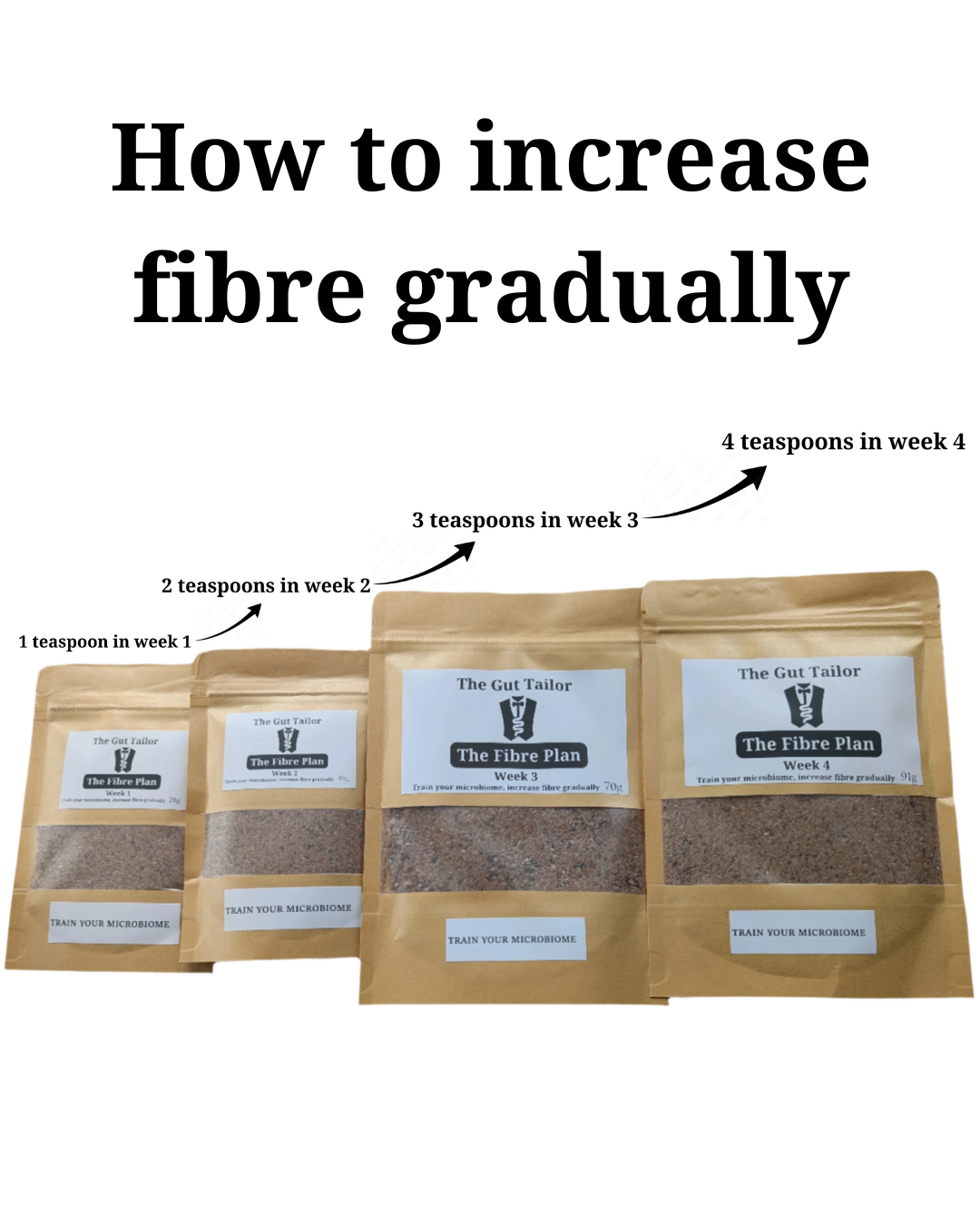
Why You Should Increase Fibre Gradually (And the Three Types of Fibre You Need to Know)
Share
It's new year's eve and you're determined to eat healthier. You jump into some high fibre porridge for breakfast, a salad for lunch and a bean curry for dinner, only to be left with an uncomfortably bloated stomach. Although fibre is essential for gut health, increasing it too quickly can lead to digestive discomfort, including bloating, gas, and even constipation.
Instead of overwhelming your digestive system, the best approach is to increase fibre gradually, allowing your gut bacteria and digestive enzymes to adapt. Here’s why slow and steady wins the fibre race—and what you need to know about the different types of fibre.
The Three Types of Fibre
Fibre isn’t just one thing. It’s a group of plant-based carbohydrates that pass through the digestive system without being fully broken down. There are three main types of fibre, each playing a different role in gut health and digestion.
1. Soluble Fibre: The Gel-Former
Soluble fibre dissolves in water to form a gel-like substance in the gut. It helps slow digestion, stabilises blood sugar levels, and supports heart health by lowering cholesterol. Foods rich in soluble fibre include oats, flaxseeds, chia seeds, apples, and legumes.
2. Insoluble Fibre: The Digestive Broom
Insoluble fibre doesn’t dissolve in water. Instead, it adds bulk to stool and helps food pass more efficiently through the digestive tract, preventing constipation. It’s found in whole grains, nuts, seeds, and vegetables like carrots and cauliflower.
3. Prebiotic Fibre: The Gut Microbiome’s Favourite Food
Prebiotic fibre is a type of soluble fibre that feeds beneficial gut bacteria, helping to maintain a healthy microbiome. It’s found in foods like onions, garlic, bananas, chicory root, and inulin (a prebiotic fibre often used in gut-friendly products like The Gut Tailor’s Fibre Plan).
Why You Should Increase Fibre Gradually
Your gut is home to trillions of bacteria that play a key role in digesting fibre. If you suddenly increase your intake, these bacteria ferment the extra fibre rapidly, producing excess gas and bloating. Here’s what happens when you increase fibre too quickly:
- Bloating and gas – Your gut bacteria go into overdrive, fermenting the extra fibre before your digestive system is ready for it.
- Constipation or diarrhoea – Without enough water and a balanced intake of soluble and insoluble fibre, stools can become too hard (leading to constipation) or too loose (leading to diarrhoea).
- Cramping and discomfort – Your gut muscles may struggle to process the sudden increase in bulk, causing discomfort.
The Right Way to Increase Fibre Intake
To avoid these issues, follow these simple steps:
- Start small – If you currently eat 10g of fibre per day, don’t jump straight to 30g. Increase by 3–5g per week to give your gut time to adjust.
- Balance the types of fibre – A mix of soluble, insoluble, and prebiotic fibre will support digestion without overwhelming your gut.
- Stay hydrated – Fibre needs water to do its job. Drinking plenty of fluids helps prevent constipation as you increase your intake.
- Listen to your body – If you experience bloating or discomfort, slow down the increase and allow your gut more time to adapt.
The Takeaway
A high-fibre diet supports gut health, blood sugar control, heart health, and regular digestion—but only if introduced correctly. The key is to increase fibre gradually, ensuring that your digestive system can adjust without discomfort. By understanding the different types of fibre and how they work together, you can make long-term changes that benefit your health in a sustainable way.
If you're looking for an easy way to gradually increase your fibre intake, The Gut Tailor’s Fibre Plan is designed to help you do just that. It introduces fibre in small, manageable amounts over time, making the transition smooth and comfortable. Because when it comes to gut health, patience pays off!
